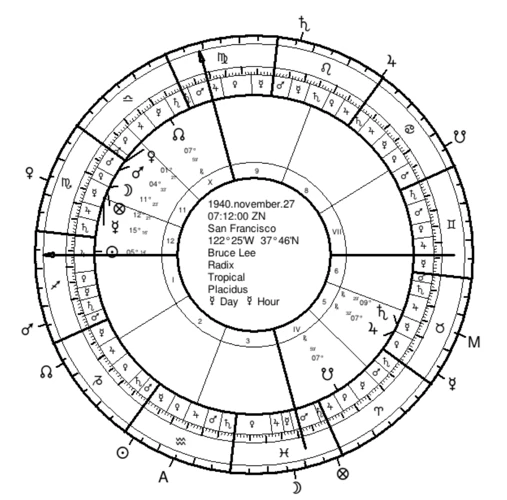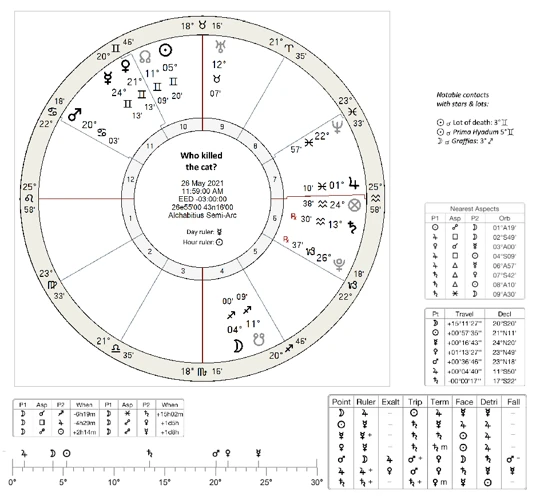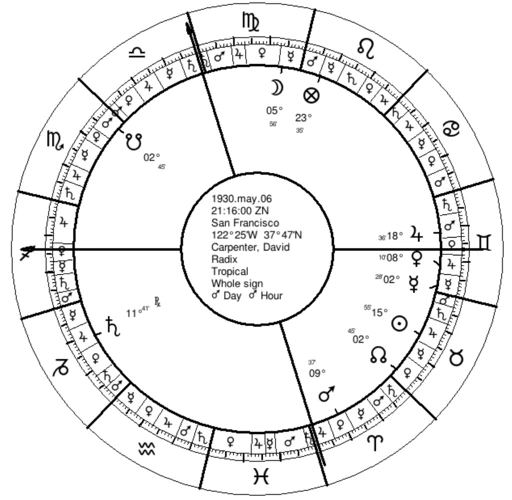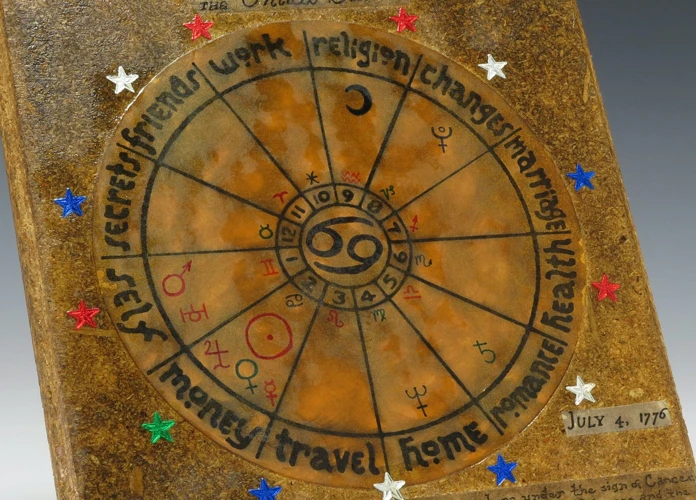What are Horary Charts?

Horary charts are a key tool in the practice of horary astrology. They are astrological charts that are specifically designed to answer a specific yes or no question. These charts offer a snapshot of the planetary positions and alignments at the exact moment the question is asked. The chart is calculated based on the time and place of the query, and it provides astrologers with valuable information to interpret and provide answers.
When using horary charts, the focus is on the Ascendant and the Moon, as they represent the querent and the current situation, respectively. The Ascendant represents the querent’s perspective and their role in the question, while the Moon represents the emotions and the flow of events surrounding the query. By examining the planetary positions, aspects, and house placements within the chart, astrologers can gain insight into the energies influencing the question and determine the most likely outcome.
Overview of Horary Astrology
Horary astrology is a branch of astrology that focuses on answering specific questions using astrological techniques. It is based on the belief that the positioning of celestial bodies at the time of asking a question can provide insights and guidance. This ancient practice has been used for centuries to gain clarity and understanding in various areas of life, such as relationships, career, and health.
In horary astrology, the astrologer creates a horary chart based on the time and location of the question. This chart becomes a snapshot of the cosmos at that moment and serves as a map for interpretation. The positions and relationships between the planets, signs, and houses within the chart provide valuable information to unravel the answer. Each planet has its own symbolism and rulerships, which astrologers consider when analyzing the chart.
One of the key principles in horary astrology is that the universe is interconnected, and everything is reflected in the celestial patterns. By examining the horary chart, astrologers can uncover hidden influences and patterns that may impact the outcome of the question. Through careful analysis and interpretation, horary astrology allows individuals to tap into the wisdom of the universe and make informed decisions.
If you want to learn more about applying horary astrology in real-life situations, you can check out our article on Applying Horary Astrology in Real Life. It provides practical examples and insights on how to use horary charts to gain clarity in different areas of life.
Importance of Yes or No Questions
The importance of yes or no questions in horary astrology cannot be underestimated. These types of questions provide a clear focus and allow for a direct and concise answer. Yes or no questions eliminate ambiguity and provide a solid foundation for interpretation.
Horary charts excel in providing precise answers to specific questions, making them particularly valuable in decision-making. By formulating a well-defined, clear-cut question, individuals can seek guidance on a range of matters such as relationships, career choices, financial decisions, and more.
When asking a yes or no question, it is crucial to ensure that the query is focused and doesn’t contain multiple questions within it. This clarity allows the astrologer to analyze the horary chart with precision and deliver a definitive answer. The importance of framing a concise yes or no question lies in its ability to unlock the insights contained within the astrological symbols and provide the querent with clarity and guidance.
Understanding the role of houses in horary charts is also key in interpreting the answers to yes or no questions. Each house in the chart represents a specific area of life, such as relationships, career, or finances. By analyzing the placement of the significators and rulerships in the relevant houses, astrologers gain further insight into the outcome of the question. The role of houses in horary charts is an essential component that aids in providing accurate responses to yes or no inquiries.
How to Cast a Horary Chart

When it comes to casting a horary chart, there are specific steps to follow in order to ensure accurate results. Here is a step-by-step guide:
- Step 1: Formulating the Question – Begin by formulating a clear and concise yes or no question. The question should be focused and avoid ambiguity to obtain the most accurate answer.
- Step 2: Determining the Time and Place – Note the exact time and place when the question is asked. This information is crucial as it establishes the birth data for the horary chart. The time should be precise, so use a reliable clock or timestamp.
- Step 3: Calculating the Chart – Use astrological software or an online horary chart calculator to generate the chart based on the provided time and place. The resulting horary chart will show the positions of the planets, the Ascendant, and the houses at the moment of the question.
- Step 4: Analyzing the Chart – Once you have the horary chart, you can begin interpreting it. Look for the Ascendant and the Moon to understand the querent’s perspective and the current situation. Pay attention to the significators and rulerships of the relevant houses to gain insights into the dynamics of the question. Consider the aspects between planets and their placements in different houses to determine the potential outcomes.
By following these steps and familiarizing yourself with the basics of horary charts and the role of houses in horary charts, you can cast accurate and insightful horary charts to answer yes or no questions.
Step 1: Formulating the Question
Step 1 in casting a horary chart is to formulate the question clearly and concisely. The question should be focused on a specific matter and be phrased in a way that can be answered with a simple yes or no response. It is important to ask a question that truly reflects the querent’s current concerns or situation. Take the time to reflect on the question and ensure that it is something that you genuinely want guidance on.
When formulating the question, it is crucial to avoid biased or leading language. Be neutral and objective in your wording to allow the chart to provide an accurate reflection of the energies surrounding your query. Additionally, it’s important to avoid double-barreled questions, which are questions that ask multiple things simultaneously. Keep your question focused and straightforward.
A helpful tip is to write down your question before proceeding to cast the chart. This not only helps in clarifying your intention but also serves as a reference point throughout the interpretation process.
Step 2: Determining the Time and Place
Determining the time and place is a crucial step in casting a horary chart. The accuracy of the chart relies on having the correct information regarding when and where the question was asked.
To determine the time, it is essential to note the exact moment the question popped into the querent’s mind or was verbalized. This time is significant because it represents the starting point for calculating the horary chart. If the time is uncertain, it is advisable to use the time when the question was first asked or when the astrologer received the question.
The place is also vital as it helps in establishing the planetary positions accurately. The astrologer needs to have the place of the querent at the time of asking the question. It is essential to note the city and state or country of residence to calculate the accurate coordinates.
Once the time and place are established, the astrologer can use astrology software or manually calculate the horary chart using an ephemeris or astrological tables. The chart is then drawn to reflect the positions of the planets at the exact time and place. This chart becomes the map through which the astrologer interprets and answers the yes or no question.
Continue to Step 3: Applying Horary Astrology in Real Life.
Interpreting the Horary Chart

Interpreting the horary chart is a crucial step in understanding the answer to a yes or no question. There are several key elements to consider when analyzing the chart:
- The Ascendant and the Moon: The Ascendant and the Moon play pivotal roles in the horary chart. The Ascendant represents the querent’s perspective and their role in the question, while the Moon represents the emotions and the flow of events surrounding the query. Astrologers pay close attention to the condition and placement of these two celestial bodies to gather insights into the overall situation.
- Significators and Rulerships: In horary astrology, each question is associated with different significators, which represent the main players or themes involved. For example, if the question pertains to career, the significators may be the Sun for the querent and Saturn for the job. Astrologers analyze the condition, dignity, and relationship between these significators and their respective rulers to determine the outcome.
Examining the planetary positions, aspects, and house placements within the chart helps astrologers assess the overall energy and dynamics at play in the question. The aspects formed between planets indicate the connections and interactions between the significators and other planetary influences. The house placements provide additional context and shed light on specific areas of life that are relevant to the question. By piecing together these elements, astrologers can form a comprehensive interpretation of the horary chart and provide valuable insights into the answer to the question at hand.
The Ascendant and the Moon
play crucial roles in interpreting horary charts. The Ascendant, also known as the rising sign, represents the querent or the person asking the question. It signifies their perspective, intentions, and motivations related to the question at hand. The Ascendant gives astrologers insight into the querent’s mindset and how they are approaching the situation.
The Moon, on the other hand, represents the emotions and the flow of events surrounding the question. It reflects the querent’s emotional state and the current circumstances influencing the query. The Moon’s placement and aspects within the chart provide valuable clues about the energy and momentum surrounding the situation. For example, a strong and well-aspected Moon may indicate a favorable outcome, while a debilitated Moon with difficult aspects may suggest challenges or obstacles.
In addition to the Ascendant and the Moon, other factors within the horary chart, such as the house rulerships, planetary aspects, and planetary placements, all contribute to the overall interpretation. By analyzing these elements holistically, astrologers can provide accurate insights and answers to the yes or no question posed by the querent.
Significators and Rulerships
In horary astrology, significators and rulerships play a crucial role in interpreting the horary chart. Significators are specific planets or celestial bodies that represent different aspects of the question or the individuals involved. By identifying the significators relevant to the query, astrologers can gain deeper insight into the dynamics at play.
The first and most important significator is the Ascendant, which represents the querent or the person asking the question. It reflects their perspective, motivations, and current circumstances. The second significator is the ruler of the house that corresponds to the topic of the question. For example, if the question is about a job opportunity, the ruler of the 10th house (representing career) becomes the significator for the job. The third significator is the Moon, which represents the emotions and the flow of events surrounding the question.
Rulerships are assigned based on the zodiac sign that is present on a particular house cusp. Each zodiac sign is ruled by a specific planet, and that planet becomes the ruler of the corresponding house. For instance, Aries is ruled by Mars, so Mars becomes the ruler of the 1st house. These rulerships provide additional insight into the energies and influences affecting the specific area of the question.
By identifying the significators and rulerships, astrologers can analyze their placements in the chart and observe any aspects or connections they may have with other planets or house cusps. This analysis helps paint a comprehensive picture of the various factors at play and aids in determining the outcome of the yes or no question.
Answering Yes or No Questions

- Using the Planetary Positions: In horary astrology, certain planets are considered “positive” and others are considered “negative.” For example, Jupiter and Venus are typically seen as positive influences, while Mars and Saturn are viewed as negative. By analyzing the positions of these planets in the chart, astrologers can determine whether the answer is more likely to be a yes or a no.
- Examining Aspects and House Placements: Aspects refer to the angles formed between planets in the chart, and house placements indicate the areas of life that are affected by the question. If there are harmonious aspects or if the relevant planets are placed in favorable houses, it suggests a positive outcome and a yes answer. Conversely, if there are challenging aspects or if the relevant planets are placed in unfavorable houses, it indicates a negative outcome and a no answer.
It’s important to note that no answer is set in stone when using horary charts. Astrology provides guidance and potential outcomes, but ultimately, free will and other factors can influence the final result. It is crucial to approach the interpretation with an open mind and use it as a tool for gaining insight rather than a definitive answer.
Using the Planetary Positions
Using the planetary positions is a fundamental aspect of interpreting horary charts when seeking answers to yes or no questions. Each planet within the chart carries specific qualities and significations that can provide insight into the outcome of the query.
- Mars: Mars represents action, energy, and conflict. Its placement and aspects can indicate obstacles or challenges that may arise.
- Venus: Venus symbolizes love, harmony, and attraction. Its presence can suggest positive outcomes, especially in matters of relationships or creativity.
- Jupiter: Jupiter represents expansion, growth, and luck. Its influence can signify favorable outcomes and opportunities.
- Saturn: Saturn symbolizes restrictions, responsibilities, and limitations. Its presence may indicate delays or obstacles in achieving the desired outcome.
- Mercury: Mercury represents communication, intellect, and decision-making. Its placement and aspects can influence the clarity of information received or the effectiveness of communication.
- Moon: The Moon holds prominence in horary charts as it represents emotions, change, and the flow of events. Its position, aspects, and current state (waxing, waning, or void of course) can provide significant insights.
When analyzing the planetary positions, it is important to consider their interactions through aspects such as conjunctions, squares, trines, or oppositions. These aspects indicate the relationships and dynamics between the planets, which can provide further understanding of the outcome.
Examining Aspects and House Placements
When it comes to answering yes or no questions using horary charts, examining aspects and house placements is crucial. Aspects refer to the angles formed between planets within the chart. They can be either harmonious (trines and sextiles) or challenging (squares and oppositions). Harmonious aspects generally indicate favorable outcomes, while challenging aspects may suggest obstacles or difficulties.
By analyzing the aspects within the horary chart, astrologers can gain insight into the interactions between the planets and how they may influence the answer to the question. For example, if the significator of the querent forms a trine aspect with a planet representing a positive outcome, it can indicate a positive answer to the question.
In addition to aspects, the house placements of the significators within the horary chart also provide valuable information. Each house in astrology represents a specific area of life, such as relationships, career, or finances. The placement of the significators in relevant houses can offer clues about the specific area of life that the question pertains to.
For example, if the significator of the querent is located in the 7th house, which represents partnerships and relationships, it may suggest that the question relates to the querent’s romantic life or a potential partnership. By considering the aspects between the significators and other planets as well as their house placements, astrologers can gain a deeper understanding of the answer to a specific yes or no question.
Common Challenges and Pitfalls
While working with horary charts, there are certain common challenges and pitfalls to be aware of. By understanding these challenges, you can enhance the accuracy and reliability of your interpretations:
- Avoiding Bias in Interpretation: It’s essential to approach horary charts with an open mind and without personal biases. As an astrologer, it’s crucial to remain objective and not let personal opinions or desires influence the interpretation of the chart. This ensures a more accurate and unbiased answer to the yes or no question.
- Dealing with Multiple Significators: Sometimes, a horary chart may involve multiple significators, meaning that several planets or points may be relevant to the question. In such cases, it’s important to carefully analyze and weigh the significance of each significator, considering their strength, dignity, and aspects. This can be a complex task, but it allows for a more comprehensive understanding of the question and its potential outcomes.
By being aware of these common challenges and pitfalls, you can navigate the intricacies of horary astrology more effectively and provide accurate answers to yes or no questions.
Avoiding Bias in Interpretation
Avoiding bias in interpretation is crucial when working with horary charts. As astrologers, it’s important to approach each chart with an open mind and refrain from letting personal opinions or desires influence the analysis. Here are some strategies to avoid bias:
- Objectivity: Strive to maintain objectivity throughout the interpretation process. Focus on the symbolism within the chart and the planetary positions rather than personal preferences.
- Knowledge: Deepen your knowledge of astrology and the principles of horary charts. This will help you rely on the established rules and guidelines of interpretation rather than personal biases.
- Consider Multiple Factors: Take into account and thoroughly analyze all the factors present in the chart, such as planetary positions, aspects, and house placements. Avoid fixating on a single factor that may align with personal biases.
- Seek Feedback: Obtain feedback from other experienced astrologers or individuals who can provide an objective perspective. This can help you identify any potential biases you may have missed.
By consciously practicing objectivity and staying mindful of biases, astrologers can offer more accurate and unbiased interpretations of horary charts, leading to clearer and more reliable answers to yes or no questions.
Dealing with Multiple Significators
When dealing with multiple significators in a horary chart, it is essential to carefully analyze their interactions and relationships. Multiple significators can occur when more than one planet represents a particular aspect of the question or when different planets symbolize different people or entities involved in the query.
To effectively handle multiple significators, start by identifying each planet’s role and its connection to the question. Consider the rulerships and dignities of the planets involved to determine their strength and influence. For example, if Venus represents a romantic interest and Mars symbolizes a potential rival, their relationship and placement in the chart will provide insights into the dynamics between these individuals.
Next, examine the aspects and house placements of the significators. Pay attention to any planetary conjunctions, oppositions, or other relevant aspects that indicate the nature of their relationship. Additionally, observe the houses that the significators rule or occupy, as these placements can provide additional information about their involvement in the question.
When dealing with multiple significators, it is crucial to consider the overall harmony or discord among them. Look for patterns and connections that can help you determine the most likely outcome or resolution. Remember to bring your intuition and astrological expertise into play while interpreting these complex interactions.
Conclusion
In conclusion, horary charts are a powerful tool for answering yes or no questions in astrology. By formulating a clear question and casting the chart based on the time and place of the query, astrologers can gain valuable insights into the energies surrounding the question. Interpreting the symbols within the chart, such as the Ascendant, the Moon, and the planetary positions, allows astrologers to provide accurate and thoughtful answers.
However, it is important to approach horary astrology with caution and respect. Avoiding bias in interpretation is crucial, as personal beliefs and desires can influence the reading. Additionally, dealing with multiple significators and conflicting indicators within the chart can present challenges. It is important to carefully analyze and consider all aspects before coming to a conclusive answer.
By utilizing the techniques and principles of horary astrology, individuals can seek guidance and clarity in their decision-making process. Whether it’s for personal matters, relationship concerns, or any other areas of life, horary charts offer a unique perspective into the energies and influences surrounding the question. So, the next time you find yourself in need of a straightforward and direct answer, consider turning to horary astrology and unlock the secrets of the cosmos.
Frequently Asked Questions
What types of questions can be answered using horary charts?
Horary charts can be used to answer a wide range of questions, including inquiries about relationships, career decisions, financial matters, health concerns, and more. The key is to formulate the question in a clear and concise manner.
How accurate are the answers provided by horary charts?
The accuracy of the answers depends on various factors, such as the astrologer’s expertise in interpreting the chart, the clarity of the question, and the astrological alignments at the time of the query. With proper understanding and practice, horary astrology can provide remarkably accurate insights.
Can horary charts provide more detailed information beyond a simple yes or no?
Yes, horary charts can offer detailed information beyond a simple yes or no answer. They can provide insights into timing, potential obstacles, and even offer guidance on possible action steps to take.
Do I need to have prior knowledge of astrology to use horary charts?
No, prior knowledge of astrology is not necessary to use horary charts. However, it can be helpful to have a basic understanding of the planets, signs, and houses to fully interpret the chart. Consulting with a professional astrologer can also provide valuable guidance.
Are the results provided by horary charts fixed or can they change over time?
The results provided by horary charts are not fixed. They represent the energies and influences at the time of the question. As circumstances change and new factors come into play, the outcome can also evolve.
What role do the houses play in horary charts?
The houses in horary charts have specific meanings and associations. They represent different areas of life, such as relationships, career, finances, and health. By examining the house placements of key planets and significators, astrologers can gain insights into how these areas are affected by the question.
Can horary charts provide accurate answers for complex or deeply personal questions?
Yes, horary charts can provide accurate answers for complex or deeply personal questions. However, it is important to approach such questions with sincerity and to carefully formulate them to ensure clarity in the chart.
Is it possible to ask multiple questions using a single horary chart?
Yes, it is possible to ask multiple questions using a single horary chart. However, it is important to keep the questions related and to analyze each question separately within the chart.
How long does it take to learn how to read horary charts effectively?
The time it takes to learn how to read horary charts effectively can vary depending on individual study and practice. It is recommended to start with a basic understanding of astrology and gradually delve into the specific techniques and principles of horary astrology.
Can horary charts be used in real-life decision-making?
Yes, horary charts can be used in real-life decision-making. By gaining insights into the energies and potential outcomes surrounding a question, individuals can make more informed choices and decisions.








